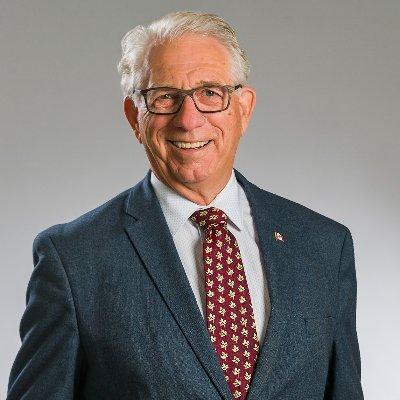The Canadian government is no stranger to the subject of UFOs, objects that today the United States government prefers to call unidentified anomalous/aerial phenomena, or UAP.
Between 1950 and 1995, the Canadian military investigated UFOs, beginning with Project Magnet on December 2, 1950, under the direction of senior radio engineer Wilbert Brockhouse Smith and developed by Transport Canada to collect data and research on unidentified flying objects. The goal was to apply any recently recovered data to modern-day technologies or engineering. At the end of the first study, Smith concluded that UFOs were ET in origin and used the manipulation of magnetism to fly the object or craft.
Shortly thereafter, on April 22, 1952, Project Second Story (also known as Project Flying Saucers and Project Theta) was established by the Defence Research Board, Canada’s military science agency.
The distinction between the two Canadian projects lies in their origins and scope. While Project Magnet was initiated and overseen by one individual, Project Second Story was a collaborative effort involving government agencies and Canadian military intelligence and was specifically tasked with handling UFO reports. Additionally, Project Second Story was funded by the Defence Research Board in Canada. In total, the committee held 6 meetings and ended in 1954. The program’s demise resulted from the government’s determination that, ultimately, the UFO phenomenon was not conducive to scientific investigation.
From a Canadian perspective, developments regarding the UAP topic have been relatively quiet for the past 70 years. That is, until Former Minister of Defense Paul Hellyer stepped forward in 2005, publicly expressing his belief that extraterrestrials are visiting Earth. Media, government officials, and Canadian civilians had mixed reactions to his statement which became a global conversation overnight. Hellyer was the first formal government official from a G7 country to step forward and speak on ETs and UFOs.
Hellyer passed away on August 8, 2021, at the age of 98. He didn’t live long enough to see how, in 2023, Canadian MP Larry Maguire would similarly come forward, writing a letter claiming that the Canadian government possesses material related to UAP.
Shortly prior to Maguire’s statement, the Canadian government established Sky Project Canada, in which the Office of the Chief Science Advisor (OCSA) was tasked with developing Canadian protocols for documenting and addressing UAP observations.
Since the release of Maguire’s initial statement on UAP, Maguire has only addressed the subject on a few occasions, which included an appearance at the Sol Foundation inaugural symposium in Palo Alto, California, in November 2023.
In a conversation with The Debrief, MP Larry Maguire recently explored his thoughts on the UAP subject, the Canadian government’s position, and his proposals for advancing the subject in Canada (the following Q&A has undergone minor editing for additional clarity).


Chrissy Newton: What sparked your initial interest in the topic of Unidentified Aerial Phenomena (UAP) in Canada?
MP Larry Maguire: The New York Times story in 2017, that showed the American government was investigating UAPs.
CN: What made you want to come forward in 2023 to address the alleged crash retrievals and secret multi-nation UAPs program Canada and the United States have participated in?
LM: Policymakers in Canada need to understand that, over the decades, various parts of the government have investigated UAP. I do not know which people know what information or what has been shared with our allies.
CN: How do you think the public perception of UAP sightings and the government’s handling of these reports could be improved?
LM: This is why we have the Sky Canada Project: to do an analysis and provide recommendations.
CN: Why is it so important that the Canadian government become more involved in investigating these phenomena?
LM: This lies in the fact that the government as a whole is not investigating UAP reports as well as the fact there are countless reports laying around in filing cabinets and no one is dealing with them.
The Canadian Government and UAPs
CN: Why do you feel it is important that Canadians know about Canadian and American governments being aware of UAPs? Why does it make a difference?
LM: It is abundantly clear that our government does not have a process to identify or investigate UAPs, or more prosaic reports being submitted by pilots or other observers.
CN: What ideas, concepts, or solutions would you propose to the Canadian government to help create transparency within Canada regarding the UAP subject?
LM: Firstly, to send a ministerial directive to all departments to have a standard reporting mechanism. Secondly, to determine who in government would be best to investigate reports and give them the resources they need. Third, declassify information so it can be shared with academics and researchers.
CN: If the American government is saying there have been confirmed UAPs, then why would the Canadian government back away from this topic?
LM: The short answer is we don’t know. Perhaps there will be more pressure put on the government once Sky Canada publishes their recommendations.
Canadian and US military forces
CN: Why do you think the Canadian military cooled on its interest in its ‘UAP file’ after an initial meeting on sharing information with allies on unidentified flying objects (UFOs)?
LM: I don’t know what communication is happening behind the scenes. It was not until I received an answer from DND on my OPQ did they admit they held a meeting two years ago.
CN: Why do the officers not appear to have been successful in determining who attended the Pentagon meeting to discuss UAPs? Shouldn’t this be government knowledge and recorded for accuracy and historical records?
LM: From my experience in dealing with departments, it is quite common for them to not provide the names of individuals to the public.
CN: Do you know what initially sparked the flurry of inquiries at National Defence headquarters in Ottawa regarding the meeting at the Pentagon?
LM: No. It could have been American officials who share the same continental airspace and have a close working relationship.
CN: What’s the point of Sky Project Canada if the Canadian military will not be working with the federal government’s science advisor on the phenomena of UFOs?
LM: It is absurd that Minister Blair has not directed DND to cooperate with the Chief Science Advisor. It begs the question – what is the motivation for not being transparent? Minister Blair needs to declassify everything to the CSA as well as other departments such as Transport Canada that have relevant information.
CN: To your knowledge, what Canadian government political parties have been briefed on the UAP topic to date?
LM: I am aware of MPs from the Liberal Party and the New Democratic Party who have shown interest and spoken with people in this space.
CN: What type of reporting systems or suggestions do you think the Canadian government could implement to help capture civilian data?
LM: This is why we need the Sky Canada Project to table recommendations, as they are best placed to advise the government.
Canadian Power Plants and UAP activity
CN: Can you share any specific incidents or reports that have particularly caught your attention regarding UAP sightings near Canadian nuclear facilities?
LM: There have been several reports regarding UAP sightings near Canadian nuclear facilities. The most recent that comes to mind was in Pickering, Ontario, in 2021.
CN: Mr. Maguire, considering the extensive reporting of Unidentified Aerial Phenomena (UAP) in Canada, including near nuclear power facilities, and the efforts of journalist Daniel Otis to access records related to these phenomena, what steps do you believe should be taken to ensure transparency and public access to information regarding UAP sightings near Canadian nuclear sites?
LM: The Minister of Natural Resources should issue a ministerial directive to the Canadian Nuclear Safety Commission to immediately declassify all incidents and set up a process for future incidents.
Politics and UAPs in Canada
CN: Do you think the UAP topic will be used as a political ploy in the next election for votes? If so, how and why?
LM: No.
CN: Looking ahead, what do you hope to achieve or see in terms of government action or policy changes regarding UAP phenomena in Canada?
LM: Having all relevant information given to the Chief Science Advisor, and once we see the Sky Canada report and recommendations, the Parliamentary Science Committee should do its own individual study. Then we can determine the next steps and provide further recommendations to the government.
CN: How do you think our Canadian government legislation could be updated or changed to reflect both UAP and whistleblower transparency?
LM: Firstly, Support Bill C-377. Secondly, provide whatever protections are necessary for former or current government employees and contractors to share relevant information. Third, inform Parliament of any previous or existing memorandums or treaties with allies on sharing UAP data. Fourth, clearly articulate a policy decision to be transparent on all matters to Parliament and Canadians.
CN: Why is it that the Canadian government always follows the American lead instead of standing firm on its own work and political policies?
LM: It is impossible to answer that question without knowing what is being agreed to within the MOUs and treaties.
CN: Thank you for your time, Mr. Maguire.
Chrissy Newton is a PR professional and founder of VOCAB Communications. She hosts the Rebelliously Curious podcast, which can be found on The Debrief’s YouTube Channel. Follow her on X: @ChrissyNewton and at chrissynewton.com.

